An Ancient gold scarab ring with a heron.
Southern Italy, 4th century BC.
Ring size S UK / 9 US / 60 EU.
Weighs 4.8 grams.
Provenance: Private English Collection, formed between the late 1970’s - early 1990’s.
Of hollow construction, the ring has a fluted band, a gold scarab is secured with fine twisted gold wire. The scarab in repoussé gold is decorated to its face with a heron standing upon one leg. The scarab although slightly crumpled is in fine condition without fault or repair.
Scarabs were among the most cherished amulets in ancient jewelry, symbolizing protection, rebirth, and good fortune. Inspired by the sacred dung beetle—an emblem of the sun god Ra in Egyptian mythology—these beetle-shaped charms were intricately crafted and adorned rings, necklaces, and bracelets, serving as powerful talismans.
Although once very popular, scarabs carved from semi-precious stones with an intaglio on the flat surface had gone out of style in the 5th century BC. Gold scarabs with relief decoration were a creation of the Greek cities in South Italy in the 4th century BC. Several examples have survived, most from Tarentum, a city with thriving gold-working studios.
In the ancient world, herons were often revered as symbols of wisdom, patience, and divine connection. In ancient Egypt, the Bennu bird, often depicted as a heron, was associated with creation, rebirth, and the sun god Ra. Greek and Roman cultures saw herons as omens, sometimes linked to the gods Athena and Hermes, representing intelligence and guidance.
An example of similar construction catalogued as Etruscan, the scarab decorated with a dolphin can be found in the collection of the British Museum, Registration number: 1917,0501.330.
https://www.britishmuseum.org/collection/object/G_1917-0501-330?selectedImageId=1613812854
Another example with a gold scarab with a raised image can be found in the collection of the Getty, Object Number: 85.AM.273.
https://www.getty.edu/art/collection/object/103VQH?canvas=9dd2826b-5b0f-4872-b4e9-e51e1272ed6a
A further ring with a gold scarab of similar construction, however catalogued as Greek, can be found in the collection of the Musée du Louvre, Numéro catalogue : Bj 2517.
https://collections.louvre.fr/ark:/53355/cl010433719





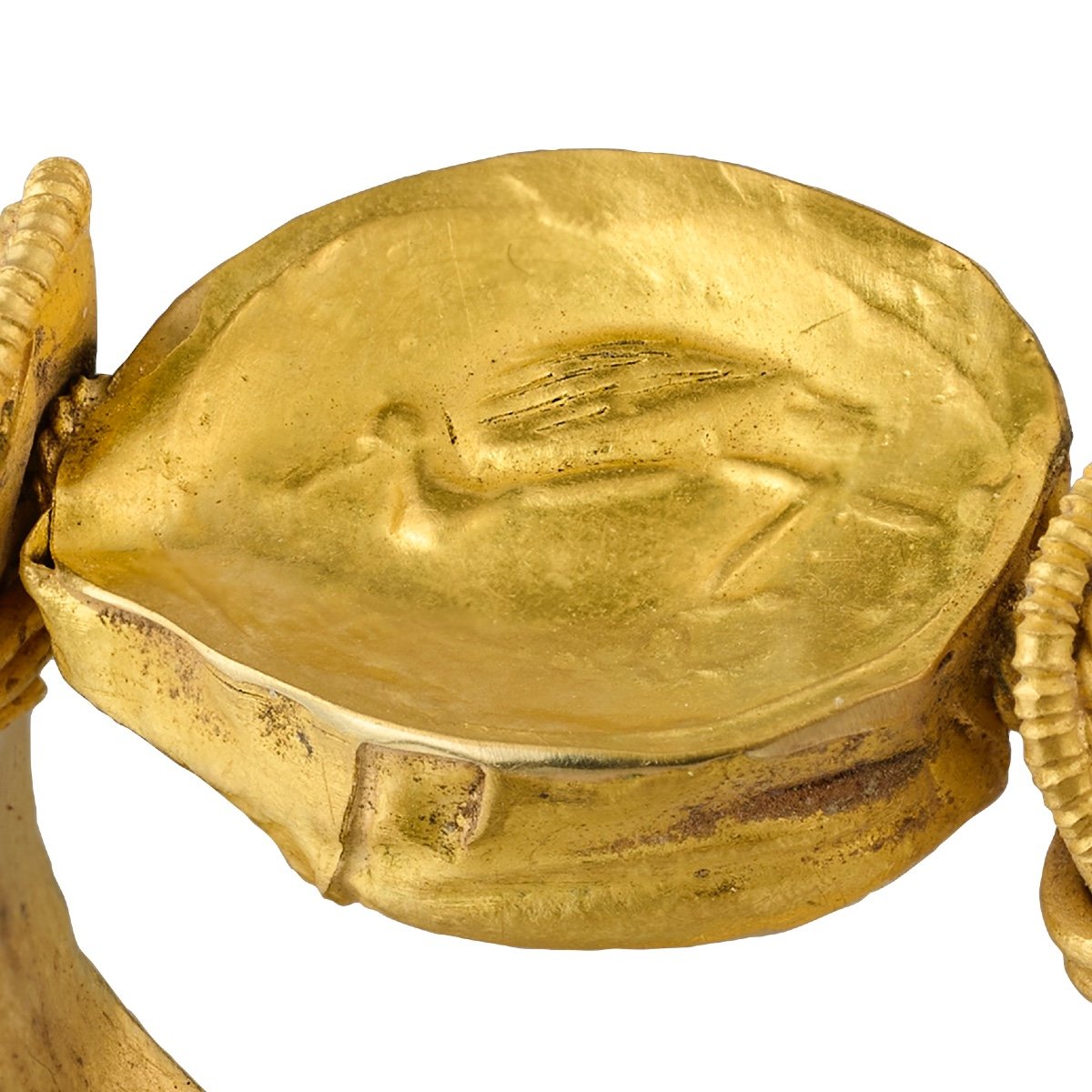
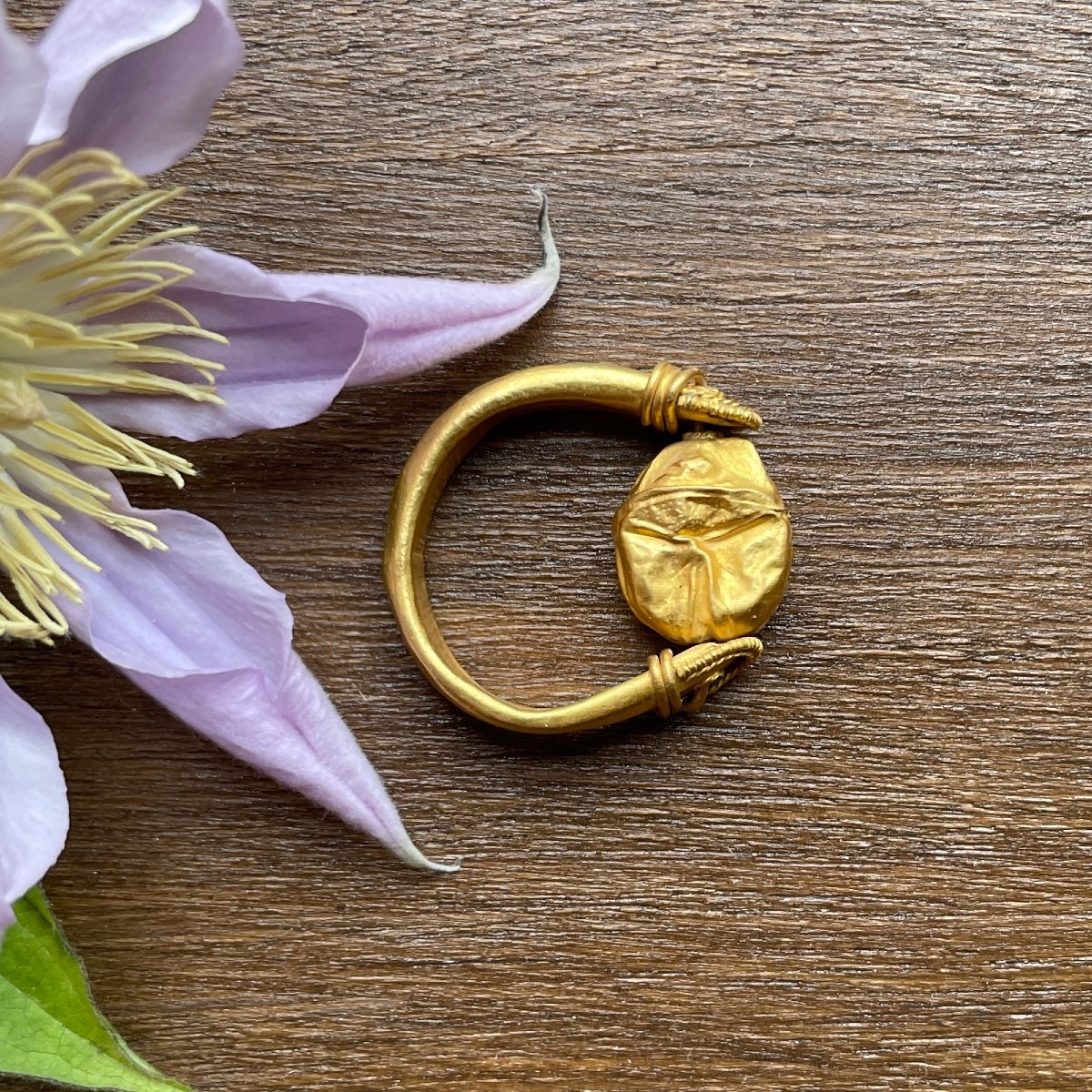
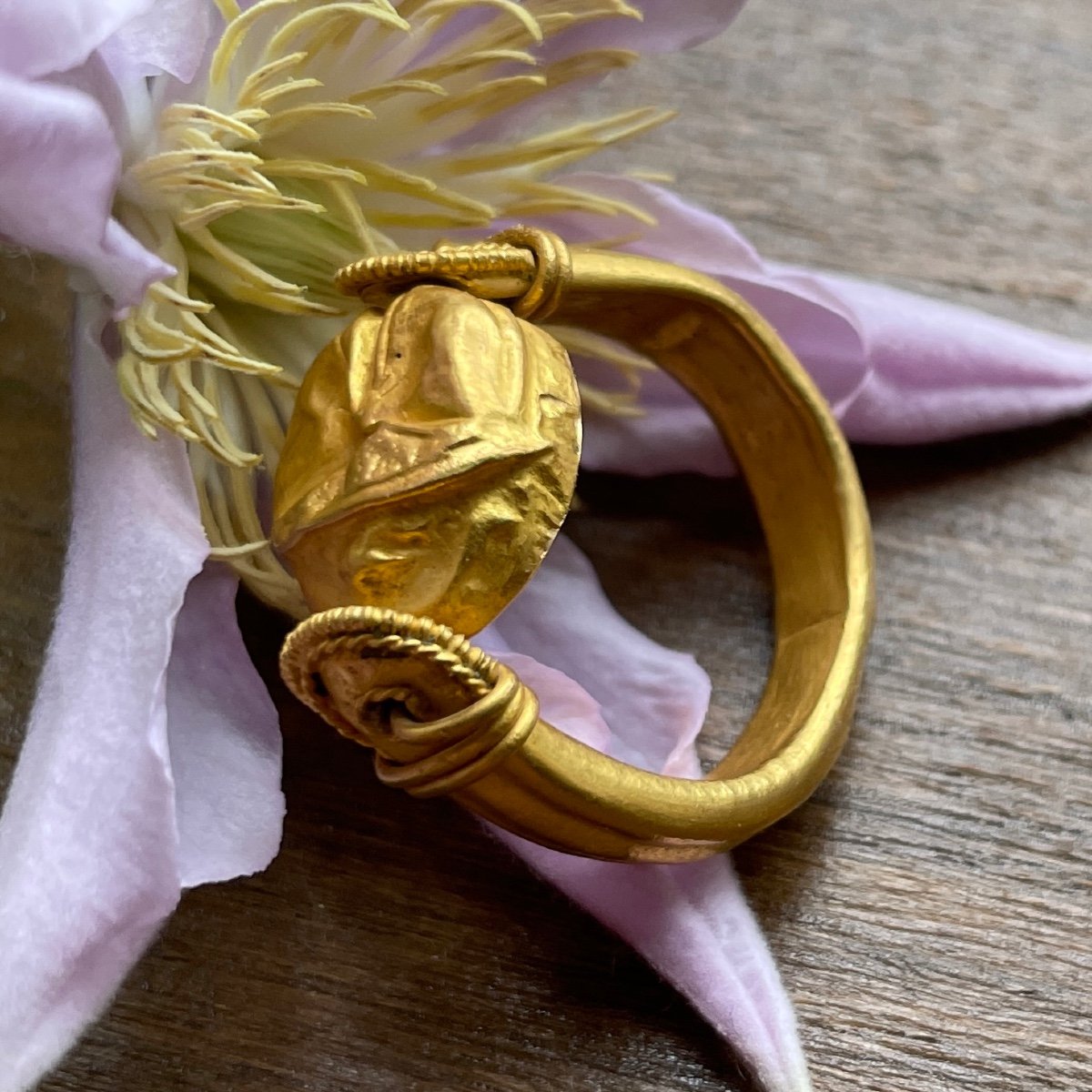



















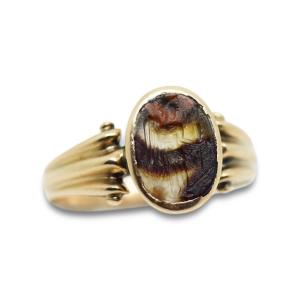





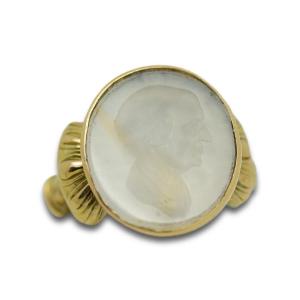
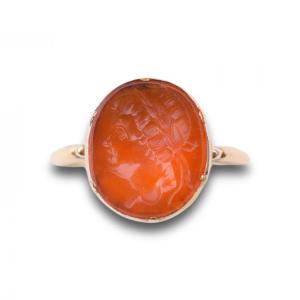
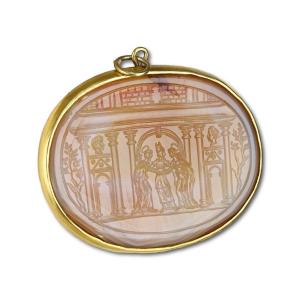



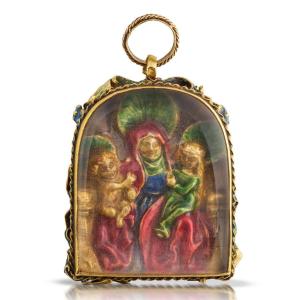
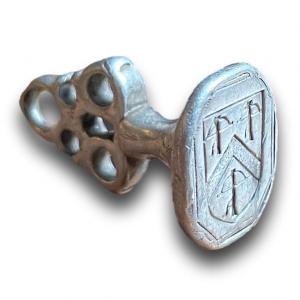



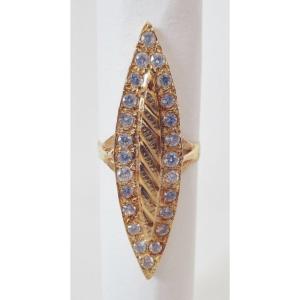
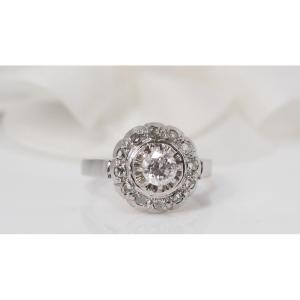
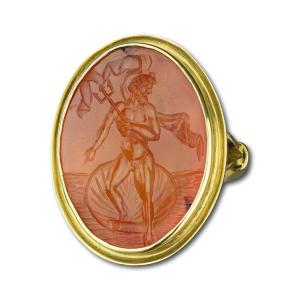



 Le Magazine de PROANTIC
Le Magazine de PROANTIC TRÉSORS Magazine
TRÉSORS Magazine Rivista Artiquariato
Rivista Artiquariato